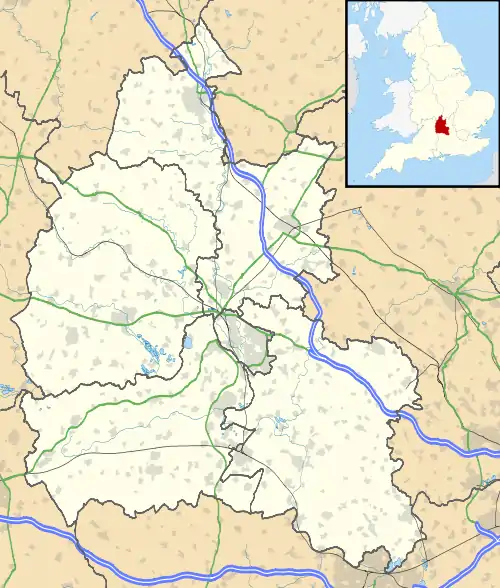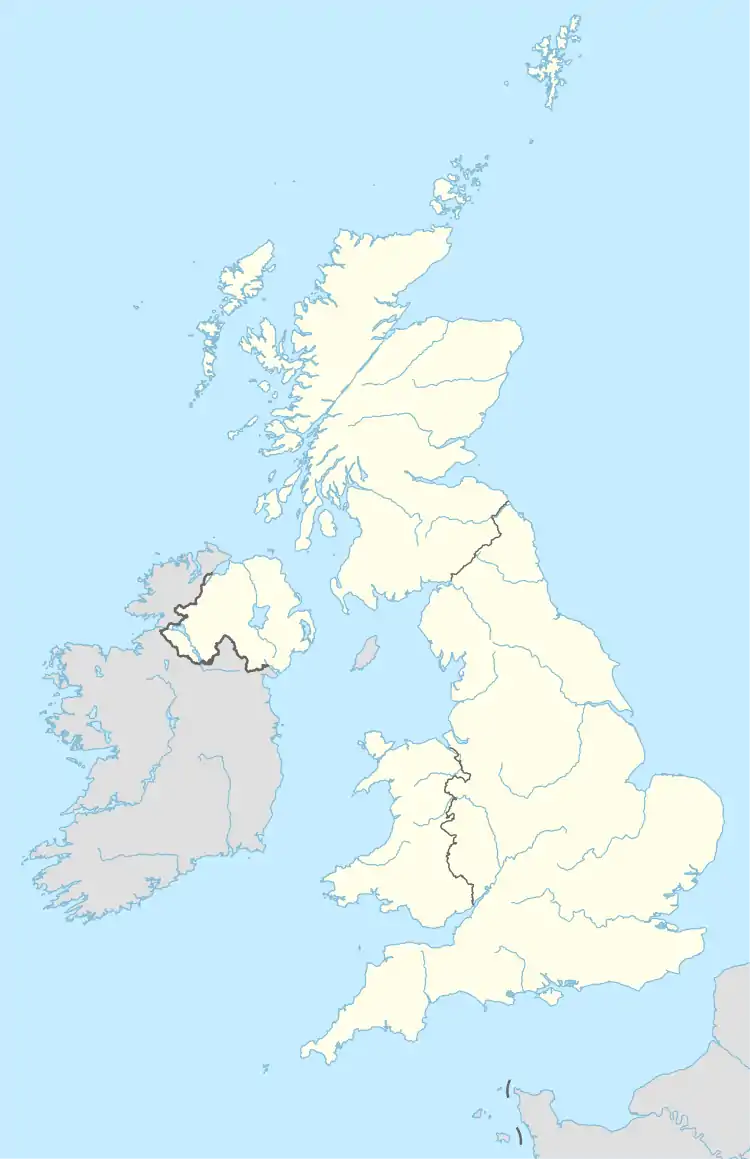| RNAS Culham (HMS Hornbill) | |||||||||||
|---|---|---|---|---|---|---|---|---|---|---|---|
| Culham, Oxfordshire in England | |||||||||||
 RNAS Culham Shown within Oxfordshire  RNAS Culham RNAS Culham (the United Kingdom) | |||||||||||
| Coordinates | 51°39′31″N 1°13′38″W / 51.65861°N 1.22722°W | ||||||||||
| Type | Royal Naval Air Station | ||||||||||
| Site information | |||||||||||
| Owner | Admiralty | ||||||||||
| Operator | |||||||||||
| Controlled by | Fleet Air Arm | ||||||||||
| Site history | |||||||||||
| Built | 1933 | ||||||||||
| In use | 1933-1960 | ||||||||||
| Battles/wars | Second World War | ||||||||||
| Airfield information | |||||||||||
| Elevation | 190 feet (58 m) AMSL | ||||||||||
| |||||||||||
Royal Naval Air Station Culham (RNAS Culham, also known as HMS Hornbill) was a former Royal Navy, Fleet Air Arm station near Culham, Oxfordshire. It opened in 1944 as an All Weather Airfield for the Royal Navy. The airbase was used by Receipt and Despatch Unit No.2, No.1 Ferry Flight, 739 Photographic Trials and Development Unit and home to 1832 R.N.V.R. (Air) Squadron.[1]
The airbase is situated around 5 miles (8.0 km) south of the city of Oxford, with the village of Culham lying 1 mile (1.6 km) to west. The notable landmarks include the city of Oxford where through it runs The Isis, which then forms a loop around the airfield to the north, west and south as it flows south east. The market town of Abingdon-on-Thames is about 2 miles (3.2 km) to the north west. Didcot junction, where a line running north/south, intersects the Great Western Main Line, is situated 3 miles (4.8 km) south, with Culham railway station, on the north/south Oxford-Didcot line, at the south west corner of the airfield.[1]
The ground layout was typical of many bomber stations, with three runways. However it had many hangars, mostly sited around the field's perimeter. Initially HMS Hornbill was used to train reservists based in the Thames Valley area using several different types of aircraft including: Supermarine Seafire, a navalised Supermarine Spitfire fighter aircraft, Hawker Sea Fury, a single-seat fighter aircraft and North American Harvards, an American single-engine advanced trainer aircraft. In May 1947 the Photographic Trials and Development Unit was based at HMS Hornbill, and in 1951 1840 Naval Air Squadron operated from the airfield for a short time. Ab initio flight training of cadets from Britannia Royal Naval College, Dartmouth, flying primary gliders, was also undertaken here in the early 1950s.
Royal Navy operational history
Photographic Trials and Development Unit
On 1 May 1947, 739 Naval Air Squadron reformed at RNAS Culham (HMS Hornbill) to become the Royal Navy’s Photographic Trials and Development Unit, (it had originally been intended to share the RAF's Photographic Reconnaissance resources at RAF Benson, but this had become overcrowded). The squadron operated de Havilland Sea Mosquito, a navalised variant of the de Havilland Mosquito, equipped as a torpedo bomber and a carrier-borne variant, and also the photo-reconnaissance version of the de Havilland Sea Hornet, a twin-engine fighter aircraft, until the unit finally disbanded on 12 July 1950.[2][3]
Royal Naval Volunteer Reserve
1832 Naval Air Squadron
1832 Naval Air Squadron re-formed at RNAS Culham on 1 July 1947 as a RNVR (Air) Fighter Squadron. Led by Lieutenant commander (A) P Godfrey OBE RNVR, the unit was one of four naval air squadrons formed in 1947 as the RNVR Air Branch, the other three were 1830 Naval Air Squadron in Glasgow at HMS Sanderling, 1831 Naval Air Squadron in Cheshire at HMS Blackcap, and 1833 Naval Air Squadron at HMS Gamecock in Warwickshire. The squadron was initially equipped with a single North American Harvard T.2B advanced trainer aircraft and four Supermarine Seafire III fighter aircraft, although later on it received six FR.46 variants of the fighter to replace the mark IIIs. In 1951 the unit replaced its inventory with Hawker Sea Fury FB.II. On 19 July 1953, 1832 Naval Air Squadron departed for RAF Benson.[4]
Units
During the course of the operation of the airbase, the following Fleet Air Arm units were at sometime based at RNAS Culham:[5]
- No. 1 Ferry Flight
- 739 Naval Air Squadron
- 812 Naval Air Squadron
- 1830 Naval Air Squadron
- 1832 Naval Air Squadron
- 1832A Naval Air Squadron
- 1832B Naval Air Squadron
- 1835 Naval Air Squadron
- 1836 Naval Air Squadron
- 1840 Naval Air Squadron
Closure
The airfield closed on 30 September 1953 and the Admiralty subsequently used it as a storage facility. In 1960 the airfield was transferred to the United Kingdom Atomic Energy Authority for use in nuclear and atomic research. The Joint European Torus (JET) nuclear fusion project is now based at the site.
RAF Beccles was a temporary lodging area under Culham's administration, and as such was called HMS Hornbill II.
References
Citations
- 1 2 "R.N.A.S. Culham". Royal Navy Research Archive - Fleet Air Arm Bases 1939 - present day. Retrieved 29 November 2023.
- ↑ "Military airfields in Oxfordshire" (PDF). static1.squarespace.com/. Retrieved 29 November 2022.
- ↑ Ballance, Howard & Sturtivant 2016, p. 46.
- ↑ "1832 Royal Naval Volunteer Reserve Air Squadron". Royal Navy Research Archive - Royal Naval Air Squadrons 1938 - present day. Retrieved 29 November 2023.
- ↑ "Culham (Clifton Hampden)". Airfields of Britain Conservation Trust. Retrieved 17 May 2020.
Bibliography
- Ballance, Theo; Howard, Lee; Sturtivant, Ray (2016). The Squadrons and Units of the Fleet Air Arm. Air Britain Historians Limited. ISBN 978-0-85130-489-2.